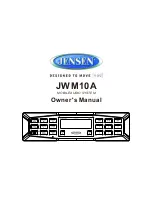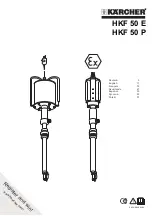
8
POSTO ESTERNO DA SUPERFICIE
POSTO ESTERNO DA INCASSO
Note
1. Appoggiare la scatola da superficie alla parete lasciando circa 165-170cm
tra la parte alta della scatola ed il terreno come mostrato in figura 1 quindi
prendere i riferimenti per i fori di fissaggio tenendo presente che il gruppo
di fili
(fig.2) deve passare attraverso l’apertura
presente sulla scatola
da superficie.
;
2. Come mostrato in figura 2, realizzare i fori di fissaggio , inserire al loro
interno i tasselli ad espansione
e, facendo passare i fili di collegamento
attraverso l’apertura
, fissare la scatola da superficie
alla parete
utilizzando le viti ;
3. Inserire il modulo
nel supporto
come mostrato in figura 3;
4. Prima di agganciare alla scatola da superficie il supporto completo di
modulo, inserire i fermi anti-effrazione come mostrato in figura 4;
5. Muovendo il supporto
come mostrato dalle frecce di figura 5, procedere
all’aggancio dello stesso alla scatola da superficie
. Il perno
deve
inserirsi nel relativo alloggiamento
come mostrato in figura 6;
6. Come mostrato in figura 7, tirare il supporto moduli
indietro compiendo
contemporaneamente un leggero movimento a sinistra come suggerito
dalle frecce;
7. Come mostrato in figura 8, ruotare il supporto moduli
nella direzione
consigliata dalla freccia e provvedere ad agganciare il fermo
all’alloggiamento
del perno. Assicurato il supporto alla scatola da
superficie, svolgere le seguenti operazioni:
7b.effettuare i necessari collegamenti con l’ausilio del giravite (lato piatto
della lama) fornito a corredo;
7c.regolare l’angolo di ripresa della telecamera agendo sulla vite ;
8. Ad impianto testato e funzionante, procedendo a ritroso delicatamente,
chiudere e fissare il supporto moduli alla scatola da superficie utilizzando il
giravite
(lato torx della lama) e le viti
come mostrato in figura 9.
Se il posto esterno è da incasso occorre procedere come di seguito indicato:
1. Dopo aver opportunamente protetto i fori di fissaggio per il supporto
moduli, murare la scatola da incasso ad una altezza tale da avere circa
165-170cm tra la parte alta della scatola e il terreno avendo cura di far
passare il gruppo di fili
(fig.2) attraverso uno dei fori precedentemente
aperti sul fondo della scatola.
;
2. Proseguire dal passo 3 della installazione da superficie tenendo presente
che al punto 7 il fermo
va agganciato come mostrato in figura 10.
La lama del giravite fornito a corredo ha due punte, una piatta ed una torx.
Sfilare la punta e reinserirla nel manico scegliendo il lato desiderato.
e
d
a
b
e
d
c
f
g
h
i
h
c
l
m
h
h
n
m
p
s
q
e
n
Se non indicato, il verso di montaggio della scatola deve
essere tale da far rimanere la cerniera sulla sinistra
Se non indicato sul fondo della scatola, il
verso di muratura deve essere tale da lasciare la cerniera sulla sinistra.
Fare attenzione affinché la scatola sia murata a filo muro finito
Nota
bene: non serrare le viti più del necessario.
!
7a.eseguire le opportune configurazioni dell’unità tramite i 2 jumper ed il
dip-switch a 4 vie accessibili dall’apertura
o
La realizzazione dell’impianto deve essere eseguita nel rispetto delle
vigenti normative nazionali, in particolare si raccomanda di:
Collegare l’impianto alla rete elettrica tramite un
che abbia una distanza di separazione
del contatto di almeno 3mm per ciascun polo e che sia in grado di
disconnettere tutti i poli simultaneamente;
Il
deve essere
posizionato in un luogo tale da consentirne un facile accesso in
caso di necessità.
Rimuovere i coperchi copri-morsetti svitando le relative viti e
tirandoli verso l’alto;
Fissare l’alimentatore su barra DIN o direttamente a parete
utilizzando le viti ed i relativi tasselli ad espansione forniti a corredo;
Togliere la tensione di rete tramite il dispositivo sopra indicato ed
eseguire le connessioni come previsto dagli schemi proposti (la
connessione verso la rete va effettuata in base alla tensione
disponibile 127 o 230Vac).
Verificare che non vi siano errori di connessione e che i fili siano
ben serrati nei morsetti;
Inserire a scatto i coperchi copri-morsetti e fissarli tramite le relative
viti;
Eseguiti tutti i collegamenti, dare tensione all’impianto.
!
!
!
!
!
!
!
!
dispositivo di
interruzione omnipolare
dispositivo di interruzione omnipolare
Installazione dell’alimentatore
SURFACE DOOR STATION
FLUSH DOOR STATION
Notes
1. Place the surface box against the wall (165-170cm between the top of the
box and the floor lever as show in figure 1) and mark the fixing holes for the
wall plugs and hole for the cables
(fig.2).
;
2. As shown on figure 2, drill the fixing holes , insert the wall plugs
and feed
the cables through the surface box opening , fix surface box to the wall
using the screws ;
3. Hook the module
in the support frame
as shown in figure 3;
4. Before the installation of the module support frame, fit the two anti-
tampering locks provided as shown in figure 4;
5. As shown in figure 5, hook the module support frame
(complete with
modules) to surface box
moving the frame as suggested from pointers.
Ensure that the pivot (fig.5) goes inside the relevant housing
as shown
in figure 6.
6. As shown in figure 7, pull back the module support frame
while moving it
slightly to the left as suggested by the pointers;
7. As shown in figure 8, open the module support frame
as suggested by
the pointer, hook the hinge lock
to the hinge
. When the support frame
is hooked to the surface box, do the following operations:
7a.make the required settings operating the two jumpers and the 4 way
dip-switch accessible from the opening
(fig.8)
7b.make the required connections using the screwdriver provided (blade
flat side);
7c.adjust the camera viewing angle by operating the screw
(fig.8);
8. When the system has been tested and is working correctly, move back the
module support frame carefully, fix it to the surface box using the provided
screwdriver
(blade torx side) and the pin machine torx screws
as
shown in figure 9.
If the door station is a flush, carry out the following:
1. Protect the module support frame fixing holes from dust then embed the
back box into the wall (165-170cm between the top of the box and the floor
level as shown on the figure 1) feeding the cables
(fig.2) through a
previous opened hole in the box.
2. Continue from step 3 of surface mounting, but at step 6 hook the hinge lock
as shown on figure 10.
The screwdriver’s blade has two sides, one flat and one torx, to select one
of them unplug the blade from the screwdriver body and plug it into the
required side.
e
a
b
e
d
c
f
g
h
h
c
l
m
h
h
n
m
o
p
s
q
e
n
Observe the orientation of the
box with the hinge on the left
Note: do not over tighten the screws more than is
necessary.
Observe the direction of the box
ensuring the hinge is on the left and take care that the box profile is in
line with the finished wall profile;
!
The system must be installed according to national rules in force, in
particular we recommend to:
Connect the system to the mains through an
which shall have contact separation of at least 3mm in
each pole and shall disconnect all poles simultaneously;
The
shall be placed for easy access and
the switch shall remain readily operable.
Remove the terminal side covers by unscrewing the retaining
screws;
Fix the power supply to a DIN bar or directly to the wall using two
expansion type screws;
Switch off the mains using the circuit breaker mentioned above and
then make the connections as shown on the installation diagrams;
Check the connections and secure the wires into the terminals;
Replace the terminal covers and fix them using the relevant
screws;
When all connections are made, restore the mains.
!
!
all-pole circuit
breaker
all-pole circuit breaker
Power Supply Installation
!
!
!
!
!
!
COLLEGAMENTO ALLA RETE ELETTRICA ED
INSTALLAZIONE ALIMENTATORE
CONNECTION TO MAINS AND POWER SUPPLY
MOUNTING INSTRUCTIONS
INSTALLAZIONE POSTO ESTERNO
DOOR STATION MOUNTING






































